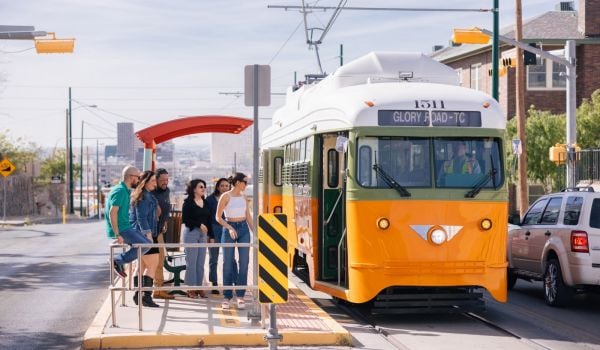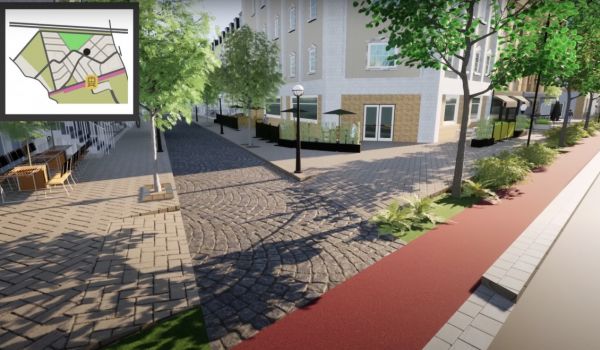Take billions of purchase transactions. Add a mountain of transportation data. Then ask, what is the relationship between how people travel and what they buy? And what does this tell us about how to build cities better?
Last week, MasterCard, in collaboration with Cubic Transportation Systems (I recently profiled Cubic VP Daniel Collins for Next City), announced a new data analysis platform that will aim to answer those questions.
By combining MasterCard’s transactions data (they process 43 billion per year) with Cubic’s transportation data, analytics and visualization technology, the platform — dubbed the Urbanomics Mobility Project — will yield insight into the way transit and economic activity are linked in cities.
The hope is that everyone from urban planners to commercial real estate developers will find the tool useful, and that city and regional governments will sign up as clients. With transit-oriented development increasingly on the mind in the public and private sectors, the release is timely.
MasterCard began leveraging (selling insights derived from) its data after the 2008 financial crisis because it realized it had, according to Ed Brandt, executive vice president and managing director of government services and solutions at MasterCard, “an opportunity to help drive efficiency.”
“We recognized that one big area of opportunity is how our data can help shape government decisions. With rapid urbanization, infrastructure needs to be efficient. We can help with that,” explains Brandt. “We provide governments with data about where economic activity is happening by state, by region and by market. They find our data is much quicker than their own.”
While they were in the process of figuring out how governments could use their data, MasterCard began to work with Cubic’s transportation consultancy service, Urban Insights. Thus the partnership formed. Urban Insights began to work with MasterCard’s merchant data, looking at how it matched up with transit routes.
“The analytic piece started with questions like ‘why do you leave your house in the morning?’” recounts Urban Insights’ Collins. “Merchant data gives us an idea of why.”
The question is not as simple as it sounds. “In the 1970s and ’80s,” Collins explains, “traditional transit planning [was] a two-way model, ‘I leave home to go to work and then I leave work and come home.’ That’s not the reality anymore. Now it’s more like, daycare, Starbucks, work, softball game, home, out to dinner.”
This is the new model that city governments must begin planning around, and this is what the Urbanomics Mobility Project aims to support.
The visualized data will not only show where there are gaps in transit but also in public services like police and fire stations, overlaid with crime statistics. The model will be viewable by time of day, so rush hour can be compared with weekends. It will provide answers to questions like, according to when and where people go out to shop, does it actually make sense to cut transit service on weekends?
The Urbanomics Mobility team already has a few hunches about trends that will be revealed, for example, the reverse commute. Their data, they believe, will confirm that job growth now occurs more commonly in outlying areas around cities. “The commute volume will stay the same but the directionality will start to change; millennials moving to cities doesn’t mean their jobs move with them,” says Brandt.
But the team is confident that this is just the beginning. “This is just a surface first attempt,” says Collins, “the fact of the matter is, there are so many more datasets and this is just a first attempt at putting two datasets together.”
Brandt agrees: “We don’t even know what this data can do.”
The possibilities seem infinite. But, although the data MasterCard sells is all aggregated and anonymous, there’s reason for caution. The Urbanomics Mobility Project was announced during Smart Cities week in Washington, D.C. The same week, the White House also announced a $160 million “Smart Cities” Initiative. Data is clearly the new paradigm in urban planning. But in worshipping data, are we losing the human view of citizens? In a recent critique of the Smart City movement, British journalist Steven Poole wrote, “[W]hat role will the citizen play? That of unpaid data-clerk, voluntarily contributing information to an urban database that is monetized by private companies? Is the city-dweller best visualized as a smoothly moving pixel, travelling to work, shops and home again, on a colorful 3D graphic display? Or is the citizen rightfully an unpredictable source of obstreperous demands and assertions of rights?”
As we embrace the myriad ways “smart cities” can offer helpful insight into human behavior, we must be careful not to take people out of planning.
For their part, the people behind the Urbanomics Mobility product are emphasizing collaboration over top-down decision-making. “We don’t just look at data and sell it to the government,” Brandt told Governing Technology magazine. “It doesn’t work that way. The data won’t be meaningful. It really has to be a partnership to work through the issues.”
The Science of Cities column is made possible with the support of the John D. and Catherine T. MacArthur Foundation.

Zoe Mendelson is a journalist in Mexico City campaigning for a more chiller world. Her work has been featured on Fast Company, Buzzfeed, Untapped Cities and elsewhere.
Follow Zoe .(JavaScript must be enabled to view this email address)
















